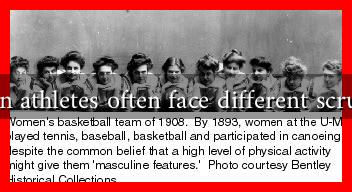-
Table of Contents
Why Do Women Athletes Often Face Different Scrutiny Than Men?
The world of sports has long been a battleground for gender equality, with women athletes frequently facing scrutiny that their male counterparts do not. This disparity in treatment can be attributed to a variety of factors, including societal norms, media representation, and the historical context of women’s sports. In this article, we will explore the reasons behind this phenomenon and highlight the implications it has on female athletes.
Societal Norms and Gender Expectations
From a young age, societal norms dictate how men and women should behave, often placing women in roles that emphasize femininity and modesty. These expectations extend into the realm of sports, where women athletes are often judged not only on their performance but also on their appearance and behavior. This scrutiny can manifest in several ways:
- Appearance Over Performance: Women athletes are often critiqued for their looks rather than their athletic abilities. For instance, female tennis players like Maria Sharapova have faced intense media focus on their physical appearance, overshadowing their achievements on the court.
- Behavioral Expectations: Women are often expected to maintain a level of decorum that is not typically imposed on men. When female athletes express passion or aggression, they may be labeled as “unladylike” or “too emotional,” while similar behavior in male athletes is often celebrated.
Media Representation and Coverage
The media plays a crucial role in shaping public perception of athletes. Unfortunately, women athletes often receive less coverage than their male counterparts, and when they do, the focus is frequently on their personal lives rather than their sports achievements. This disparity can be illustrated by the following points:
- Underrepresentation: According to a study by the Women’s Sports Foundation, women receive only about 4% of sports media coverage. This lack of visibility contributes to the perception that women’s sports are less important or less exciting.
- Sexualization: Female athletes are often sexualized in media portrayals, which can detract from their athletic accomplishments. For example, the coverage of the U.S. Women’s National Soccer Team often emphasizes their looks and personal lives rather than their skills and teamwork.
Historical Context and Institutional Barriers
The historical context of women’s sports also plays a significant role in the scrutiny they face. For decades, women were excluded from many sports, and when they were allowed to compete, it was often in a limited capacity. This legacy has created a perception that women’s sports are less legitimate or worthy of respect. Key points include:
- Title IX Impact: The passage of Title IX in 1972 was a significant step toward gender equality in sports, but the effects are still being felt today. While it increased participation rates for women, it also highlighted the disparities in funding and support for women’s programs.
- Legacy of Discrimination: Many sports organizations have historically prioritized men’s events, leading to a lack of investment in women’s sports. This has resulted in fewer opportunities for women athletes to showcase their talents on a larger stage.
Case Studies: Notable Examples of Scrutiny
Several high-profile female athletes have faced intense scrutiny that underscores the issues discussed above. Some notable examples include:
- Serena Williams: The tennis superstar has faced criticism for her on-court attire and behavior, with some commentators labeling her as “angry” or “intimidating,” while male players are often praised for similar displays of passion.
- Simone Biles: The gymnast faced scrutiny for prioritizing her mental health during the Tokyo 2020 Olympics, with some critics questioning her commitment to the sport. In contrast, male athletes are often lauded for taking breaks or stepping back when needed.
Conclusion: The Path Forward
The scrutiny faced by women athletes is a complex issue rooted in societal norms, media representation, and historical context. As we move forward, it is essential to challenge these biases and advocate for equal treatment in sports. By increasing media coverage of women’s sports, celebrating their achievements, and fostering an environment that values performance over appearance, we can help create a more equitable landscape for all athletes.
In summary, addressing the different scrutiny faced by women athletes is crucial for promoting gender equality in sports. By recognizing and challenging these disparities, we can pave the way for future generations of female athletes to compete and thrive without the weight of societal expectations holding them back.
For further reading on this topic, you can explore resources from the Women’s Sports Foundation.



